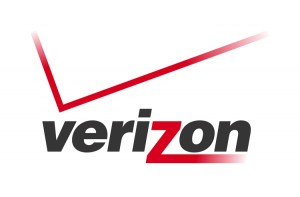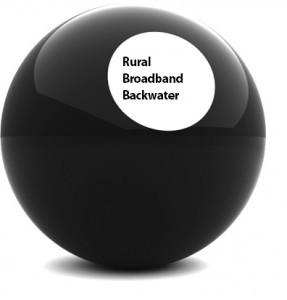 Verizon Communications has made its intentions clear — would-be broadband customers in its service area who are off the FiOS footprint can pound salt. The Federal Communications Commission issues regular reports on broadband services and their adoption by consumers across the United States. In the latest report, published this month, customers in Verizon’s current or former service areas who are not being served by Verizon FiOS are behind the broadband 8-ball, waiting for the arrival of DSL service from a company that has diverted most of its time, money, and attention on deploying its fiber-to-the-home service for the big city folks.
Verizon Communications has made its intentions clear — would-be broadband customers in its service area who are off the FiOS footprint can pound salt. The Federal Communications Commission issues regular reports on broadband services and their adoption by consumers across the United States. In the latest report, published this month, customers in Verizon’s current or former service areas who are not being served by Verizon FiOS are behind the broadband 8-ball, waiting for the arrival of DSL service from a company that has diverted most of its time, money, and attention on deploying its fiber-to-the-home service for the big city folks.
One might think the worst DSL availability in the country would be in rural states like Alaska, or territories like Guam, or income-challenged Mississippi. No, the bottom of the barrel can be found in northern New England and the mid-Atlantic states — largely the current or former domain of Verizon:
Percentage of Residential End-User Premises with Access to High-Speed Services by State
(Connections over 200 kbps in at least one direction)
| Maine | 73% | Sold to FairPoint Communications |
| Maryland | 76% | |
| New Hampshire | 63% | Sold to FairPoint Communications |
| New York | 79% | |
| Vermont | 72% | Sold to FairPoint Communications |
| Virginia | 69% | |
| West Virginia | 66% | Seeks sale to Frontier Communications |
Source: FCC High-Speed Services for Internet Access: Table 19
Some might argue that DSL penetration ignores Verizon’s fiber upgrades, but does it?
Providers of High-Speed Connections by Fiber by State as of December 31, 2008
(Connections over 200 kbps in at least one direction)
| Maine | 8% |
| Maryland | 9% |
| New Hampshire | 10% |
| New York | 21% |
| Vermont | 4% |
| Virginia | 20% |
| West Virginia | 7% |
Source: FCC High-Speed Services for Internet Access: Table 20
 A survey of the rest of the country calls out Verizon’s inattentiveness to DSL expansion in its remaining service areas not covered by FiOS.
A survey of the rest of the country calls out Verizon’s inattentiveness to DSL expansion in its remaining service areas not covered by FiOS.
For example: Alabama, Idaho, Montana, and Oklahoma all enjoy 80 percent DSL availability. Utah and Nevada achieved 90 percent coverage. Even mountainous Wyoming, the least populous state in the country, provides 78 percent of its state’s customers with the choice of getting DSL service. Yet New York manages only one point higher among its telephone companies, largely because of enormous service gaps upstate.
What happened? By 2002 Verizon began to realize their future depended on moving beyond providing landline service. The company began to divert most of its resources to a grand plan to deliver fiber connections to residences in larger markets in its service areas. While great news for those who live there, those that don’t discovered they’ve been left behind by Verizon. Northern New England got flushed by Verizon altogether — sold to the revenue-challenged FairPoint Communications who assumed control of Verizon’s problems and managed to make them worse.
The argument that rural broadband is “too expensive” doesn’t fly when looking at DSL availability in the expansive mountain west or rural desert regions. Compact states like Vermont, New Hampshire, and Maryland are far easier to wire than North Dakota, New Mexico or even Texas with its large rural areas (87, 87, and 81 percent coverage, respectively). Verizon simply doesn’t realize the kind of Return on Investment it seeks from FiOS customers — a dollar amount investors want to see.
Of course, that’s the argument Frontier Communications, and FairPoint behind it, made to regulators in sweeping promises to deliver better broadband service. FairPoint missed its targets and declared bankruptcy. Frontier is still in the “promises, promises” stage of its deal to take over millions of rural customers currently served by Verizon.


 Subscribe
Subscribe
Let’s face it: Verizon does not like being a rural carrier. I would guess that the amount of DSL in more rural areas is directly related to what provider is there, and might be inversely proportional to the top speed offered or speed/price ratio. Last I heard NH, VT and ME don’t have Windstream, CenturyLink or even Qwest as their ILEC in most of their territory. Like it or not, Qwest is pretty good about providing some sort of DSL service over their copper, though it might only be 1.3 Mbps down and 700 kbps up. Of course if you… Read more »